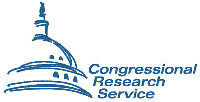Congress of the United States
Date of this Version
2009
Abstract
Nearly half a million miles of oil and gas transmission pipeline crisscross the United States. While an efficient and fundamentally safe means of transport, many pipelines carry hazardous materials with the potential to cause public injury and environmental damage. The nation’s pipeline networks are also widespread, running alternately through remote and densely populated regions; consequently, these systems are vulnerable to accidents and terrorist attack. The 109th Congress passed the Pipeline Safety Improvement Act of 2006 (P.L. 109-468) to improve pipeline safety and security practices. The 110th Congress passed the Implementing Recommendations of the 9/11 Commission Act of 2007 (P.L. 110-53), which mandates pipeline security inspections and potential enforcement (§ 1557) and requires federal plans for critical pipeline security and incident recovery (§ 1558). The 111th Congress is overseeing the implementation of these acts and examining ongoing policy issues related to the nation’s pipeline network.
The Office of Pipeline Safety (OPS), within the Department of Transportation (DOT), is the lead federal regulator of pipeline safety. The OPS uses a variety of strategies to promote compliance with its safety regulations, including inspections, investigation of safety incidents, and maintaining a dialogue with pipeline operators. The agency clarifies its regulatory expectations through a range of communications and relies upon a range of enforcement actions to ensure that pipeline operators correct safety violations and take preventive measures to preclude future problems. The Transportation Security Administration (TSA), within the Department of Homeland Security (DHS), is the lead federal agency for security in all modes of transportation— including pipelines. The agency oversees industry’s identification and protection of pipelines by developing security standards; implementing measures to mitigate security risk; building stakeholder relations; and monitoring compliance with security standards, requirements, and regulation. While the OPS and TSA have distinct missions, pipeline safety and security are intertwined.
Federal activities in pipeline safety and security are evolving. Although pipeline impacts on the environment remain a concern of some public interest groups, both federal government and industry representatives suggest that federal pipeline programs have been on the right track. As oversight of the federal role in pipeline safety and security continues, Congress may focus on the effectiveness of state pipeline damage prevention programs, the promulgation of low-stress pipeline regulations, federal pipeline safety enforcement, and the relationship between DHS and the DOT with respect to pipeline security, among other provisions in federal pipeline safety regulation. In addition to these specific issues, Congress may wish to assess how the various elements of U.S. pipeline safety and security activity fit together in the nation’s overall strategy to protect transportation infrastructure.


Comments
Published by Congressional Research Service, 7-5700, www.crs.gov, RL33347